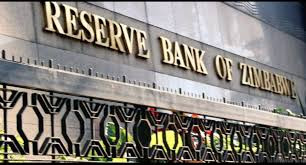Zimbabwe has added the Chinese yuan, Australian dollar and two other currencies from Asia to the multi-currency basket as the country turns to the East to ease the liquidity constraints biting the economy.
By Bernard Mpofu Acting Business Editor
Presenting the Monetary Policy Statement in Harare yesterday, acting Reserve Bank of Zimbabwe governor Charity Dhliwayo said Treasury had no immediate plans to re-introduce the local currency.
Before this latest policy intervention, the multi-currency basket was dominated by the United States dollar, South African rand and Botswana pula.
The move could signal a gear up in government’s look-east policy which was adopted more than a decade ago after Harare fell out of favour with the European Union and the United States due to alleged gross human rights violations and failure to uphold the rule of law.
“Trade and investment ties between Zimbabwe, China, India, Japan and Australia have grown appreciably. It is against this back ground of growth in trade and investment ties that in the 2014 National Budget, the Minister of Finance and Economic Development underscored the importance of including other currencies in the basket of already circulating currencies,” Dhliwayo said.
Keep Reading
- Chamisa under fire over US$120K donation
- Mavhunga puts DeMbare into Chibuku quarterfinals
- Pension funds bet on Cabora Bassa oilfields
- Councils defy govt fire tender directive
“In this regard, we wish to advise exporters and the general transacting public that in addition to the opening of accounts denominated in Botswana Pula, British Pound Sterling, Euro, South African Rand, United States Dollar, individuals and corporates can also open accounts denominated in the Australian Dollar (AUD), Chinese Yuan (CYN), Indian Rupee (INR) and Japanese Yen (JPY).”
The use of the multi-currency regime was credited with stemming hyperinflation which had made the local currency worthless.
Turning to the capitalisation status of local financial institutions, the central bank acting governor also announced a reprieve for banking institutions after postponing the deadline for the ongoing capitalisation exercise to 2020. Banks were in June expected to raise $100 million in core capital amid concerns that predominantly locally-owned lenders were struggling to meet the new threshold.
“Capital requirements remain at current levels of $25 million for Commercial Banks, $25 million for Merchant Banks, $20 million of Building Societies, $15 million for Discount and Finance Houses and $5 million for Microfinance Banks. Nevertheless, compliance with Cabinet-approved levels has now been moved to 31 December 2020,” Dhliwayo said.





